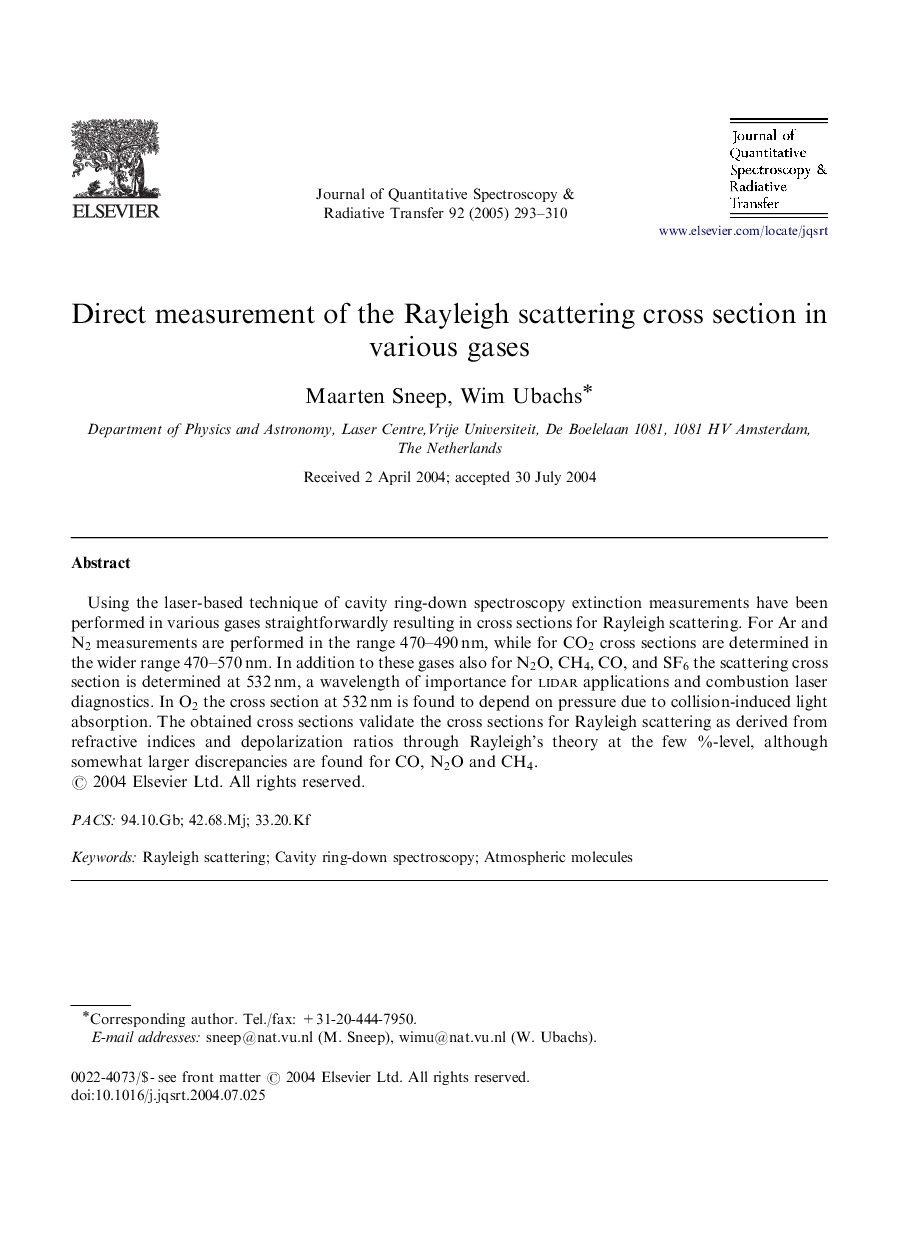| Article ID | Journal | Published Year | Pages | File Type |
|---|---|---|---|---|
| 9599206 | Journal of Quantitative Spectroscopy and Radiative Transfer | 2005 | 18 Pages |
Abstract
Using the laser-based technique of cavity ring-down spectroscopy extinction measurements have been performed in various gases straightforwardly resulting in cross sections for Rayleigh scattering. For Ar and N2 measurements are performed in the range 470-490Â nm, while for CO2 cross sections are determined in the wider range 470-570Â nm. In addition to these gases also for N2O, CH4, CO, and SF6 the scattering cross section is determined at 532Â nm, a wavelength of importance for lidar applications and combustion laser diagnostics. In O2 the cross section at 532Â nm is found to depend on pressure due to collision-induced light absorption. The obtained cross sections validate the cross sections for Rayleigh scattering as derived from refractive indices and depolarization ratios through Rayleigh's theory at the few %-level, although somewhat larger discrepancies are found for CO, N2O and CH4.
Related Topics
Physical Sciences and Engineering
Chemistry
Spectroscopy
Authors
Maarten Sneep, Wim Ubachs,
